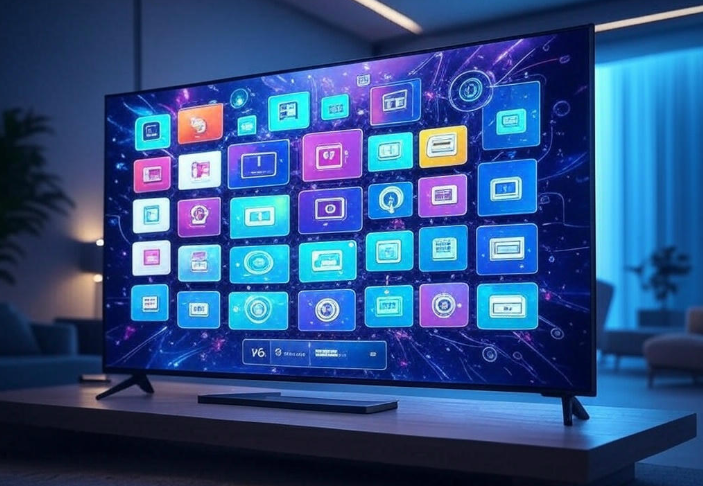Picture this: you’re sitting in a coffee shop, trying to scan an important document with your phone. You fumble through Google Drive’s clunky interface, squint at tiny previews, and end up with a wonky-looking scan that barely resembles the original paper. Sound familiar? Well, those days are officially over.
Google just rolled out what might be the biggest update to Google Drive’s document scanner in years, and honestly, it’s about time. The tech giant has completely redesigned the scanner editor with their shiny new Material 3 Expressive design language, and the difference is like night and day.
What’s Actually Changed Here?
Let’s be real – Google Drive’s scanner wasn’t exactly winning any beauty contests before this update. The old interface felt cramped, the previews were microscopic, and editing your scanned documents was more frustrating than trying to fold a fitted sheet. But this new redesign? It’s like Google finally heard our collective sighs of frustration and decided to do something about it.
The most noticeable change is the “larger page previews that allow you to see every detail of your scan.” We’re talking about a proper fullscreen experience here, not those tiny thumbnails that made you feel like you needed reading glasses. You can now swipe between pages like you’re browsing through photos, which honestly should have been a thing years ago.
But here’s where it gets really clever: the bottom-right corner of each image provides “easy access to page deletion & retake.” No more hunting through menus or accidentally deleting the wrong page. It’s right there when you need it, which is exactly how good design should work – invisible until you need it, then perfectly placed.
The Tools Carousel: Finally, Editing That Makes Sense
Remember that confusing mess of buttons at the bottom of the old interface? Google scrapped that entirely and replaced it with what they’re calling a “tools carousel.” Think of it as your editing command center, but actually organized this time.
You can Enhance, Filter, Crop & rotate, and more from here, with a connected M3 Expressive button group leveraged. The buttons are bigger, clearer, and follow Google’s latest design principles. It’s like they finally realized that people use their phones with their thumbs, not tiny styluses.
The enhance tool is particularly impressive. We’ve all been there – you scan a document and it looks like it was photographed during a solar eclipse. The new enhance feature actually makes your scans look professional, which is crucial when you’re sending important documents to clients or colleagues.
Material 3 Expressive: More Than Just Pretty Colors
Now, you might be wondering what this “Material 3 Expressive” thing is all about. Is it just Google’s fancy way of saying “we made it prettier”? Not quite.
Material 3 Expressive is Google’s latest design philosophy that focuses on making apps feel more human and personal. It’s about using colors, shapes, and animations that feel natural rather than sterile. In the context of the Drive scanner, this means softer edges, better color contrast, and interactions that feel smooth rather than jarring.
The new page thumbnail carousel is a perfect example of this in action. Google touts how the “new Material 3 page thumbnail carousel allows you to quickly skim through your document and simply drag and drop pages to re-order them.” You can literally drag pages around to reorder them, which feels as natural as shuffling papers on your desk.
Why This Update Actually Matters
Look, we live in a world where our phones have become our portable offices. Between remote work, digital nomad lifestyles, and just the general chaos of modern life, we’re constantly scanning receipts, contracts, business cards, and random important papers. The old Google Drive scanner felt like it was designed by people who never actually used it on a daily basis.
This redesign shows that Google finally gets it. They’ve created something that works the way people actually work. The larger previews mean you can actually see what you’re scanning without playing a guessing game. The intuitive tools make editing feel natural rather than like you need a computer science degree.
But there’s something deeper here too. This update represents Google’s broader push to make their productivity suite actually productive. They’re not just slapping new paint on old features – they’re rethinking how these tools fit into our daily workflows.
The Technical Stuff (Without the Jargon)
For the nerds out there (and we love you), here are some of the nitty-gritty details. The update maintains the same camera scanning interface, so your muscle memory for actually capturing documents remains intact. There are no changes to the actual camera scanning UI as of today. The updates start after you capture a document.
The real magic happens in post-processing. The new enhancement algorithms seem more sophisticated, the crop tools are more precise, and the color filtering options actually make a difference. Google’s also improved the underlying image processing, though they’re keeping the specifics close to their chest.
The drag-and-drop functionality for reordering pages uses native Android gestures, which means it feels consistent with how you interact with other parts of your phone. Small details like this matter more than you might think – they’re the difference between an app that feels foreign and one that feels like a natural extension of your device.
Rolling Out to Everyone (Finally)
Here’s the good news: you don’t need to be a Google Workspace enterprise customer to get these improvements. The rollout began on September 1, 2025, and it’s “available to all Google Workspace customers, Workspace Individual Subscribers, and users with personal Google accounts.” That means whether you’re running a Fortune 500 company or just trying to scan your receipts for tax season, you get the same improved experience.
The rollout is happening gradually over about 15 days, so don’t panic if you don’t see the new interface immediately. Google does this to ensure stability and catch any bugs before they reach everyone. It’s like a soft opening at a restaurant – they want to work out the kinks before the grand opening.
What This Means for Your Daily Life
Let’s get practical for a moment. How does this actually change your day-to-day experience with document scanning?
First, you’ll spend less time squinting at your phone screen. Those larger previews mean you can actually verify that your scan captured everything important before you save it. No more discovering later that you missed half the document because the preview was too small to tell.
Second, the editing process becomes something you might actually enjoy rather than endure. The new tools are laid out logically, and the drag-and-drop reordering means organizing multi-page documents becomes intuitive rather than frustrating.
Third, your scanned documents will simply look better. The improved enhancement tools and filters mean your phone scans can rival what you’d get from a proper document scanner. This matters when you’re sending professional documents or need clear, readable scans for important paperwork.
The Bigger Picture
This update is part of Google’s larger strategy to dominate the mobile productivity space. They’re not just competing with other scanning apps anymore – they’re trying to replace entire categories of office equipment. Why buy a dedicated document scanner when your phone can do the job just as well?
But more importantly, this shows Google listening to user feedback in a meaningful way. The old scanner interface had been a pain point for years, with users constantly requesting better previews, easier editing, and more intuitive organization. This update addresses pretty much every major complaint people had.
It’s also worth noting that this comes as more companies embrace remote and hybrid work models. Documents that used to live in filing cabinets now need to exist digitally, and the quality of mobile scanning tools directly impacts productivity. Google’s investment in making this experience better isn’t just about user satisfaction – it’s about maintaining relevance in a changing work landscape.
What Comes Next?
While Google hasn’t announced what’s coming next for the Drive scanner, this update sets the stage for even more advanced features. We might see AI-powered text recognition improvements, automatic document categorization, or integration with other Google Workspace tools.
The Material 3 Expressive redesign also suggests that Google is planning to maintain this tool for the long haul. Companies don’t invest in major design overhauls for features they’re planning to deprecate. This feels like a foundation for future improvements rather than a final update.
Insights
Google Drive’s scanner redesign might seem like a small update in the grand scheme of things, but it represents something bigger: tech companies finally understanding that good design isn’t about adding more features – it’s about making existing features work better.
The new interface won’t revolutionize your life, but it will make one small part of your day less frustrating. And in our increasingly digital world, where we’re constantly juggling between physical and digital documents, that’s actually pretty valuable.
Whether you’re a small business owner scanning invoices, a student digitizing notes, or just someone trying to keep their paperwork organized, this update makes the process more pleasant and efficient. Sometimes the best technology improvements aren’t the flashy new features – they’re the ones that make everyday tasks just a little bit easier.
The rollout is happening now, so keep an eye on your Google Drive app over the next couple of weeks. Your future self will thank you when you’re scanning that next important document and actually enjoying the process instead of fighting with it.



